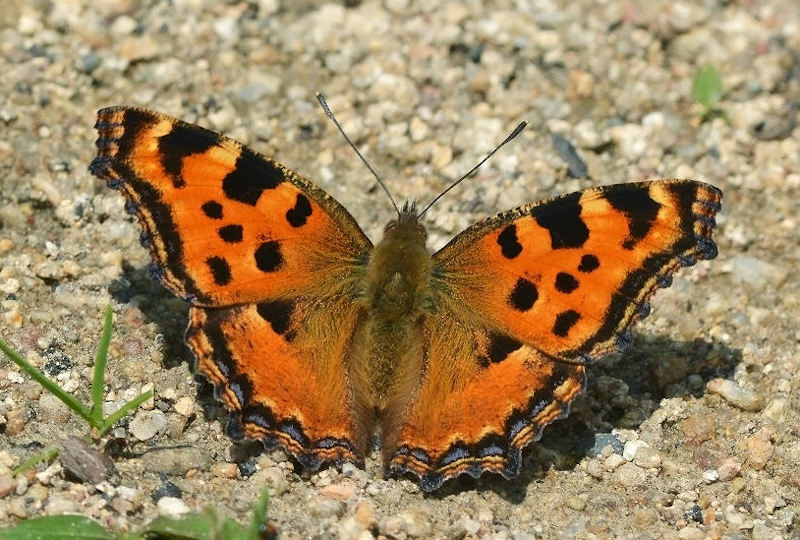Large Tortoiseshell
Nymphalis polychloros
Checklist Number59.029 [B&F: 1594]
Verification
Record will normally be accepted but photo evidence may be required - check with CMR if not sure of identity
Classification
| Family: | Nymphalidae |
| Subfamily: | Nymphalinae |
| Genus: | Nymphalis |
| Species: | polychloros |
| Authority: | (Linnaeus, 1758) |
A resident throughout much of Fennoscandia and mainland Europe, and historically this species was widespread and common in woodland in many parts of England, Wales and Scotland, with the greatest concentrations were in the midlands, south and east of England, although it has not been recorded from Ireland.
However, it underwent a severe decline in the first half of the 20th century and there have been less than 150 records since 1951. Several causes of its decline have been suggested - including climate change, parasitism, and the effect of Dutch Elm disease on one of its primary foodplants. Now generally considered to be extinct in the British Isles, with any sightings on the south coast considered to be migrants from the continent or accidental or deliberate releases of captive-bred stock, with a dramatic increase in numbers along the south coast in the early 2010s.
In Hampshire and Isle of Wight there were only eight sightings during the 20th Century. However, two seen in 2005 and another three in 2006 served as a prelude to a significant change in status, with 38 seen in 2007, 12 in 2008 with similar numbers annually through to 2013. At the time of writing (2018), the last were in early 2014.
Wingspan 64-70 mm. Larva feeds on Wych Elm, English Elm, Sallow, Willow, Aspen, Poplar, Silver Birch, Downy Birch and Wild Cherry.
However, it underwent a severe decline in the first half of the 20th century and there have been less than 150 records since 1951. Several causes of its decline have been suggested - including climate change, parasitism, and the effect of Dutch Elm disease on one of its primary foodplants. Now generally considered to be extinct in the British Isles, with any sightings on the south coast considered to be migrants from the continent or accidental or deliberate releases of captive-bred stock, with a dramatic increase in numbers along the south coast in the early 2010s.
In Hampshire and Isle of Wight there were only eight sightings during the 20th Century. However, two seen in 2005 and another three in 2006 served as a prelude to a significant change in status, with 38 seen in 2007, 12 in 2008 with similar numbers annually through to 2013. At the time of writing (2018), the last were in early 2014.
Wingspan 64-70 mm. Larva feeds on Wych Elm, English Elm, Sallow, Willow, Aspen, Poplar, Silver Birch, Downy Birch and Wild Cherry.
